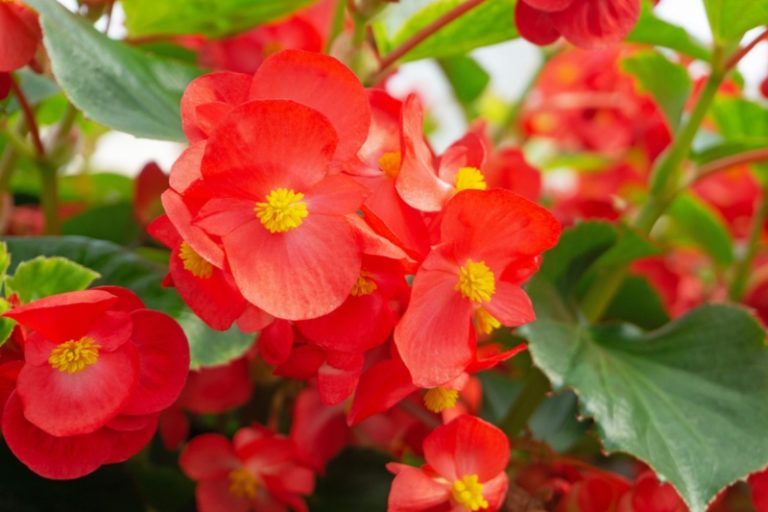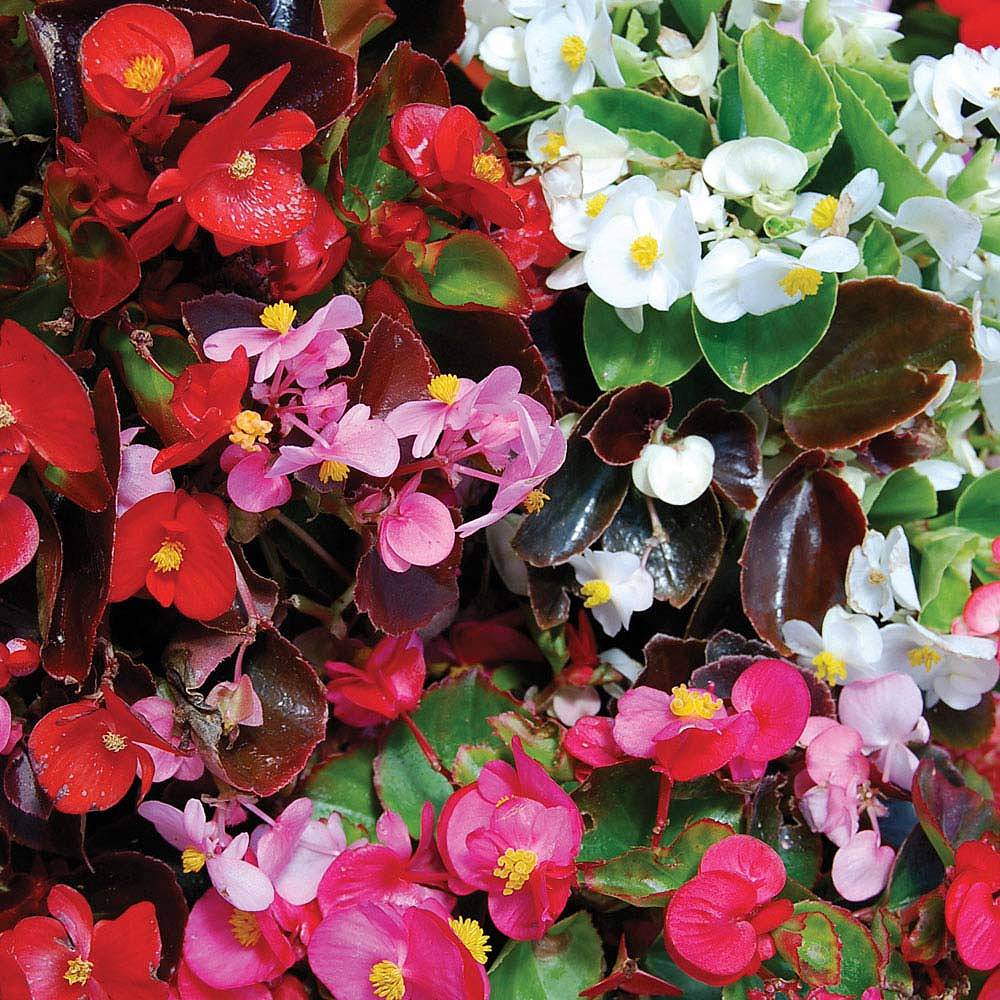

Some cultivars resistant to pythium root rot. Attributes: Genus: Begonia Family: Begoniaceae Life Cycle: Annual Perennial Recommended Propagation Strategy: Leaf Cutting Seed Stem Cutting Country Or Region Of Origin: Southeastern United States Particularly Resistant To (Insects/Diseases/Other Problems): Deer resistant.Tags: #showy flowers #full sun tolerant #small spaces #houseplant #drought tolerant #bronze #white flowers #pink flowers #red flowers #shade garden #interiorscape #waxy #low maintenance #fall interest #rabbit resistant #mass planting #window boxes #cpp #mounding #edging #summer flowers #deer resistant #border planting #ccp #spring interest #pollinator plant #fantz #flowers late spring #flowers midsummer #flowers early summer #flowers late summer #shade border #compact habit #dry soils tolerant #butterfly friendly #flowers early fall #problem for cats #problem for dogs #problem for horses #heavy shade tolerant #annual 'Barbara Rogers', 'Cocktail Whiskey', 'Emperor Red', 'Monza', 'Party Pink', 'Prelude White', 'Senator Red', 'Whopper Rose Bronze Leaf' Profile Video: See this plant in the following landscape: Containers at Pitt County Arboretum Cultivars / Varieties:Ĭlumping nearly five feet tall, large white flowers all season, USDA zones 7-9.Įxcellent resistance to Pythium root rot. VIDEO Created by Elisabeth Meyer for " Annuals, Perennials, Vines, and Groundcovers" a plant identification course offered in partnership with Longwood Gardens. See Phytophthora Root and Crown Rot in the Landscape. Some cultivars have shown excellent resistance to pythium root rot. Susceptible to mealy bugs and thrips, rot, and fungal diseases. Insects, Diseases, and Other Plant Problems:

These plants are also a good addition to pollinator and drought-resistant gardens, in containers and window boxes, and massed in borders.

Use wax begonia in patio containers, in window boxes, planted along walkways or woodland edges, or in shady locations. Container plants may be cut back in fall and overwintered indoors in a cool location with reduced watering. To propagate, sow seeds in January in gentle heat and do not cover with compost, or take leaf or stem cuttings. This plant resists browsing by deer and rabbits and is tolerant of hot summer temperatures, some mild drought, and heavy shade. Mulch well in the summer to protect roots, and water well. Bronze-leaved varieties tend to do better in sunnier locations. Once established, wax begonias adapt to a wide range of light conditions, though they do require moderately humus rich, well-drained moist soils. Generally requiring little maintenance, plants mature in size to around 6 to 12 inches high with a similar spread. Loose clusters of cymes in leaf axils, single or double and in various colors, bloom from spring to frost. Wax begonia is a compact, mounded, succulent, and fibrous-rooted plant with fleshy stems and green to bronze leaves. Mature begonia plants range in size from a few inches high to over 12 inches high, and the flowers, foliage colors, and sizes are very diverse. Wax begonias are of the Semperflorens-Cultorum hybrid group and are derived from a closely related group of South American species that have shown some cold hardiness in USDA zones 8-10.īegoniaceae is a large, flowering plant family, the name of which honors Michael Begon (1638-1710), Governor of French Canada, and includes about 1500 different species and hundreds of hybrids. Wax begonias are a very popular member of the Begoniaceae (begonia) family, often used as an annual bedding plant or as a tender, herbaceous perennial grown in containers and brought indoors for the winter. Phonetic Spelling beh-GO-nee-ah sem-pur-FLOR-enz kul-TOR-um This plant has low severity poison characteristics.


 0 kommentar(er)
0 kommentar(er)
